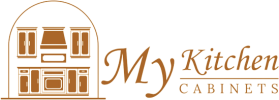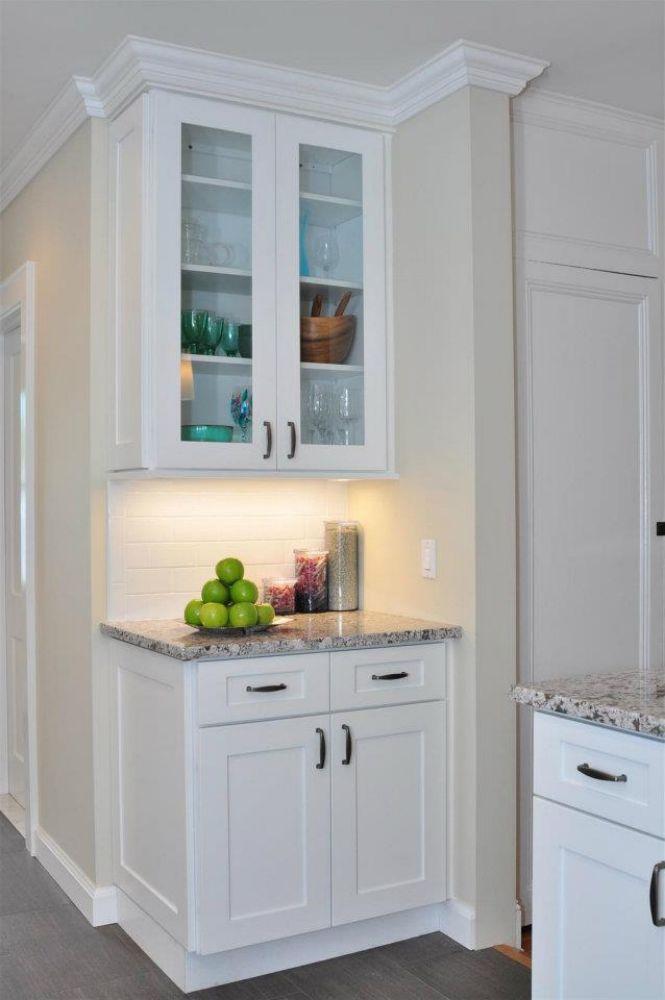Understanding the Relationship Between Cabinets and Indoor Air Quality
The quality of the air inside a home plays a significant role in the health and comfort of its occupants. Modern homes are built to be more energy-efficient and airtight, which helps save energy but also traps airborne pollutants. One major contributor to indoor air pollution comes from the materials used in interior furnishings — especially cabinetry.
Cabinets, found in kitchens, bathrooms, and storage spaces, are often made using composite wood, adhesives, and finishes that can release volatile organic compounds (VOCs). These emissions, if not controlled, can negatively affect air quality and cause health issues such as headaches, respiratory irritation, and allergies.
Choosing environmentally certified cabinetry, such as those verified under the Impact of cabinets on indoor air quality standards, is a proactive way to ensure healthier indoor environments. These cabinets meet strict emission limits and support sustainable home design, promoting both style and safety.
How Cabinets Influence Air Quality in Homes
Cabinets can either improve or degrade indoor air quality depending on the materials, finishes, and adhesives used during manufacturing. Traditional cabinetry often contains formaldehyde-based resins and solvent-based paints that release harmful gases over time, a process known as “off-gassing.”
When cabinets off-gas, they continuously emit VOCs into the air long after installation. Since kitchens and bathrooms tend to have less ventilation than open spaces, VOCs can accumulate, affecting indoor air purity.
In contrast, modern cabinet manufacturers have shifted toward eco-friendly practices that limit or eliminate VOC emissions. This change, driven by certifications like Greenguard Gold, ensures that cabinetry contributes to a healthier indoor environment.
Common Air Pollutants Released by Non-Certified Cabinets
The impact of cabinets on indoor air quality largely depends on what pollutants they release. Conventional cabinets made from engineered wood or medium-density fiberboard (MDF) often emit several harmful chemicals, including:
-
Formaldehyde: A known respiratory irritant used in adhesives and resins.
-
Toluene: Found in solvent-based paints, can cause dizziness and headaches.
-
Xylene: Affects the nervous system with prolonged exposure.
-
Benzene: A carcinogenic compound occasionally present in coatings or finishes.
These pollutants can persist for years, particularly in confined indoor areas. Children, elderly individuals, and people with asthma or chemical sensitivities are especially vulnerable to their effects.
Opting for certified low-emission cabinetry significantly reduces exposure to these harmful substances.
Materials That Affect the Impact of Cabinets on Indoor Air Quality
Cabinet materials are the foundation of their effect on indoor air quality. The composition of cabinet boxes, doors, and shelves determines the amount of chemical emissions released over time.
-
Composite Woods: Particleboard and MDF are affordable but often contain urea-formaldehyde, which can emit VOCs.
-
Solid Wood: Naturally emits minimal chemicals but may still release VOCs if treated with high-emission finishes.
-
Plywood: Lower in VOC emissions when manufactured using phenol-formaldehyde resins rather than urea-based ones.
-
Eco-Friendly Alternatives: Some manufacturers now use bamboo, reclaimed wood, or low-emission engineered boards that comply with CARB Phase 2 and Greenguard Gold standards.
Choosing the right materials is crucial for reducing the overall environmental and health impact of cabinetry inside the home.
The Role of Adhesives and Finishes in Air Quality
Beyond wood composition, the adhesives and finishes applied to cabinets also play a pivotal role in determining air quality. Many adhesives contain VOC-heavy resins, and traditional finishes—such as oil-based paints and lacquers—release solvent fumes during curing and long after application.
To minimize emissions, manufacturers are switching to:
-
Water-based adhesives: These significantly reduce VOC output compared to solvent-based glues.
-
Low-VOC or Zero-VOC finishes: Available in stains, paints, and sealants that meet Greenguard Gold standards.
-
UV-cured coatings: These are hardened instantly using ultraviolet light, eliminating chemical solvents.
These eco-conscious methods preserve indoor air quality while maintaining durability and aesthetic appeal.
Why Greenguard Gold Certification Matters
When evaluating the impact of cabinets on indoor air quality, Greenguard Gold certification serves as the gold standard for safety. UL Environment created this certification to ensure that products used indoors emit minimal pollutants.
Greenguard Gold certified cabinets undergo extensive testing in controlled environmental chambers, where VOC emissions are measured over time. The certification guarantees compliance with some of the strictest chemical limits in the world, suitable for environments such as schools and healthcare facilities.
Homeowners who choose certified cabinetry can trust that their investment promotes cleaner air and aligns with sustainable building practices.
The Testing Process for Certified Cabinets
To earn Greenguard Gold certification, cabinet products must pass a rigorous evaluation that includes:
-
Material Analysis: Every component, from adhesives to finishes, is reviewed for chemical composition.
-
Chamber Testing: Cabinets are placed in sealed chambers to measure real-time emissions.
-
VOC Screening: Thousands of potential chemical pollutants are tested and quantified.
-
Health-Based Criteria: Emission levels are compared against exposure thresholds set by agencies like the U.S. Environmental Protection Agency (EPA) and the World Health Organization (WHO).
-
Ongoing Compliance: Certified manufacturers undergo annual audits to maintain certification status.
This process ensures that certified cabinetry consistently delivers low emissions and superior indoor air safety.
Health Benefits of Installing Low-Emission Cabinets
The advantages of installing eco-certified cabinetry go beyond environmental sustainability. They directly impact the health and comfort of your household.
-
Reduced Respiratory Irritation: Cleaner air minimizes asthma triggers and allergic reactions.
-
Fewer Headaches and Fatigue: Lower VOC exposure improves concentration and well-being.
-
Better Sleep Quality: Reduced chemical exposure supports a more relaxing indoor atmosphere.
-
Protection for Sensitive Individuals: Children, seniors, and individuals with compromised immune systems benefit the most from improved air quality.
Low-emission cabinets make the home not only aesthetically pleasing but also a safe haven for overall health.
The Long-Term Impact of Cabinets on Indoor Air Quality
Cabinets contribute to long-term indoor air quality because VOC emissions don’t stop immediately after installation. They gradually release into the air over time, sometimes for years.
Certified cabinets, on the other hand, are designed to minimize these emissions even after extended use. Manufacturers achieve this through cleaner adhesives, waterborne coatings, and non-toxic wood treatments.
Investing in low-emission cabinetry ensures your home remains a healthy environment for the long term, preventing the accumulation of toxins in closed spaces.
Sustainable Manufacturing and Its Air Quality Benefits
Modern manufacturers have embraced sustainability not only to protect the environment but also to enhance human health. Factories producing Greenguard Gold certified cabinets often implement:
-
Waste Reduction Programs: Reusing scrap materials and reducing emissions during production.
-
Energy Efficiency Measures: Using renewable energy sources and optimizing equipment.
-
Responsible Sourcing: Acquiring wood from certified forests that avoid harmful treatments.
These environmentally responsible practices further reduce the total ecological footprint of cabinetry production and enhance indoor air safety.
How Cabinet Placement and Ventilation Affect Air Quality
Even high-quality cabinets can impact indoor air quality if improperly installed or placed in poorly ventilated areas. Ensuring proper air circulation during and after installation allows any residual emissions to dissipate more quickly.
Homeowners can improve air quality by:
-
Opening windows during installation.
-
Using exhaust fans in kitchens and bathrooms.
-
Installing air purifiers with activated carbon filters.
Combining low-emission cabinetry with adequate ventilation maximizes the benefits of a healthier indoor atmosphere.
Comparing Traditional Cabinets vs. Low-Emission Cabinets
| Feature | Traditional Cabinets | Greenguard Gold Certified Cabinets |
|---|---|---|
| Material Composition | Often includes urea-formaldehyde MDF | Uses low-emission, CARB-compliant materials |
| VOC Emissions | High levels from adhesives and finishes | Minimal VOCs under strict emission limits |
| Air Quality Impact | Can contribute to poor indoor air | Promotes cleaner, safer air |
| Longevity | May off-gas for years | Emits at safe levels throughout lifespan |
| Sustainability | Limited environmental responsibility | Certified for eco-friendly production |
The difference between these two cabinet types highlights how much safer and more sustainable certified cabinetry is for modern households.
Energy-Efficient Homes and the Role of Cabinets
Energy-efficient homes are built to be tightly sealed, reducing heat loss and improving insulation. However, this can also trap indoor pollutants, amplifying the impact of cabinets on indoor air quality.
In such settings, choosing Greenguard Gold certified cabinets becomes even more important. These products emit fewer pollutants and prevent chemical buildup, helping maintain air purity without compromising energy savings.
Thus, combining airtight construction with low-emission materials creates an optimal balance between energy efficiency and health.
The Economic Value of Healthy Cabinet Choices
Although low-emission and certified cabinets may have a higher initial cost, they offer significant long-term savings. Healthier air reduces the risk of medical issues related to indoor pollution, while sustainable materials often extend cabinet lifespan.
Furthermore, eco-certified homes attract more buyers in the real estate market. Homeowners can command higher resale value by highlighting their commitment to healthy and sustainable living.
This dual benefit makes certified cabinets both a health investment and a financially sound choice.
The Role of Homeowners in Maintaining Air Quality
After installation, homeowners play a vital role in sustaining good indoor air quality. Proper maintenance and cleaning practices can prevent pollutant buildup and preserve cabinet condition.
Tips include:
-
Using mild, non-toxic cleaners instead of harsh chemicals.
-
Avoiding aerosol sprays near cabinets.
-
Keeping humidity levels between 30–50% to prevent VOC re-emission.
-
Regularly checking for mold or mildew, especially in kitchens and bathrooms.
By following these habits, homeowners can ensure that their cabinetry continues to support a healthy indoor environment for years to come.
The Future of Indoor Air Quality and Cabinet Design
The cabinetry industry is evolving toward greater health and environmental awareness. Manufacturers are investing in research to develop zero-VOC materials and recyclable cabinet systems that eliminate chemical exposure entirely.
Emerging technologies include bio-based adhesives and plant-derived finishes that offer both strength and sustainability. As building standards advance, certified products will likely become the default rather than the exception.
This shift signifies a future where every aspect of home design—including cabinets—contributes positively to indoor air quality and overall well-being.
Conclusion
The impact of cabinets on indoor air quality extends far beyond aesthetics. Cabinets are integral to the health of a home’s atmosphere, influencing the level of airborne pollutants that families breathe every day. Poorly constructed cabinetry made from high-emission materials can degrade indoor environments, while certified, low-emission cabinets support cleaner, safer air.
Choosing Greenguard Gold certified cabinetry is one of the most effective steps homeowners can take toward improving their living conditions. These cabinets combine elegance, durability, and environmental responsibility, ensuring every breath you take indoors is fresher and healthier.
By understanding the materials, finishes, and certifications behind cabinetry, homeowners can make informed decisions that protect both their families and the planet.

